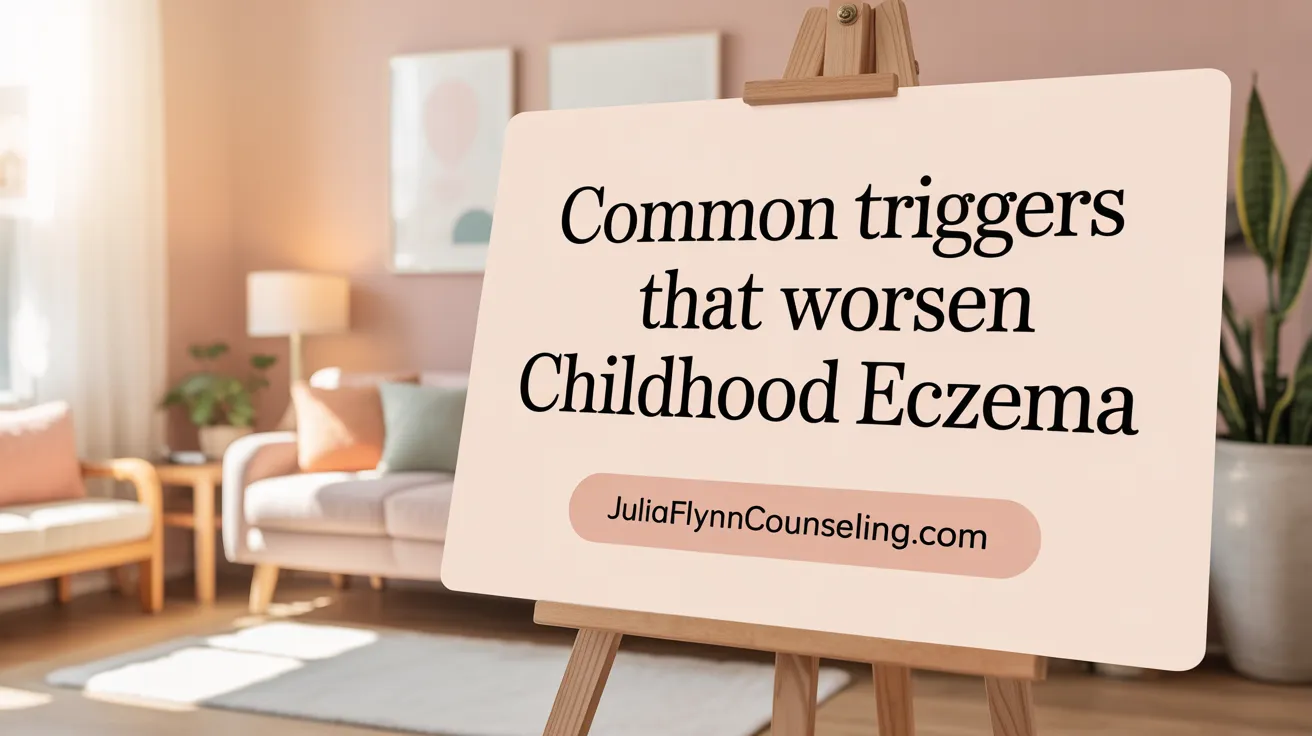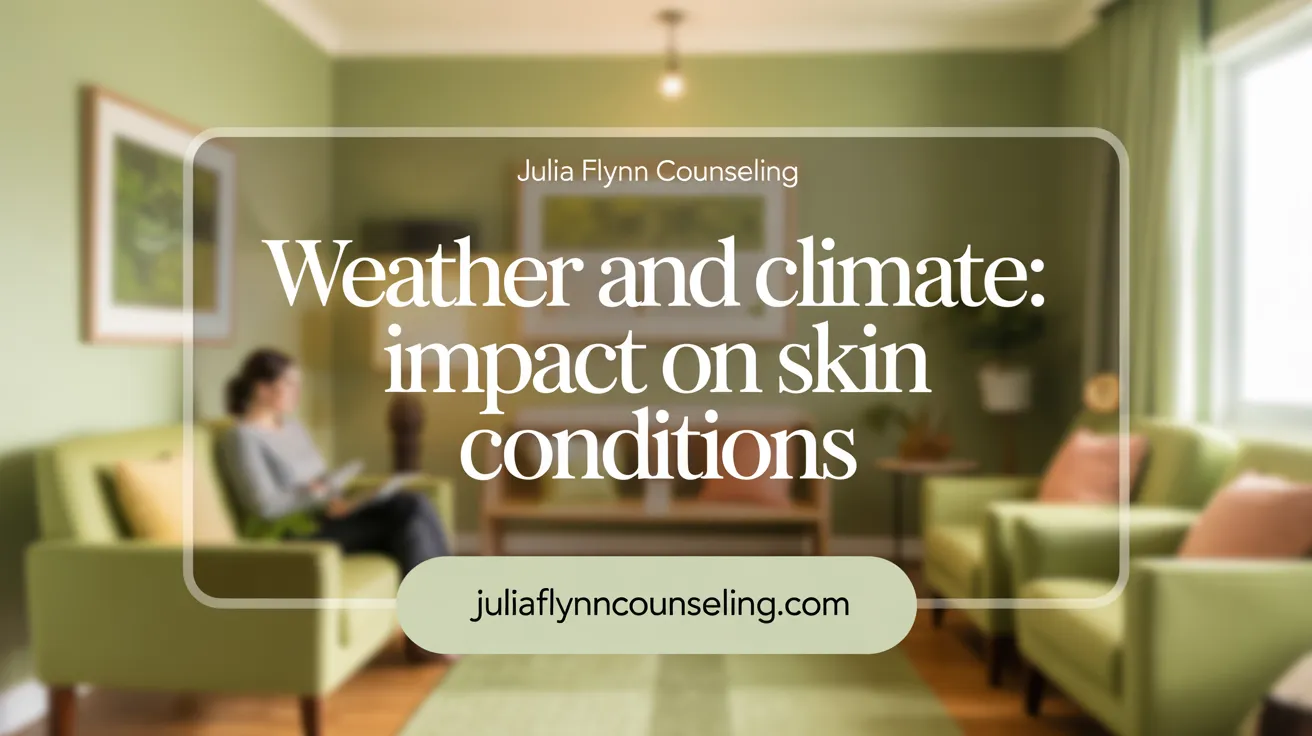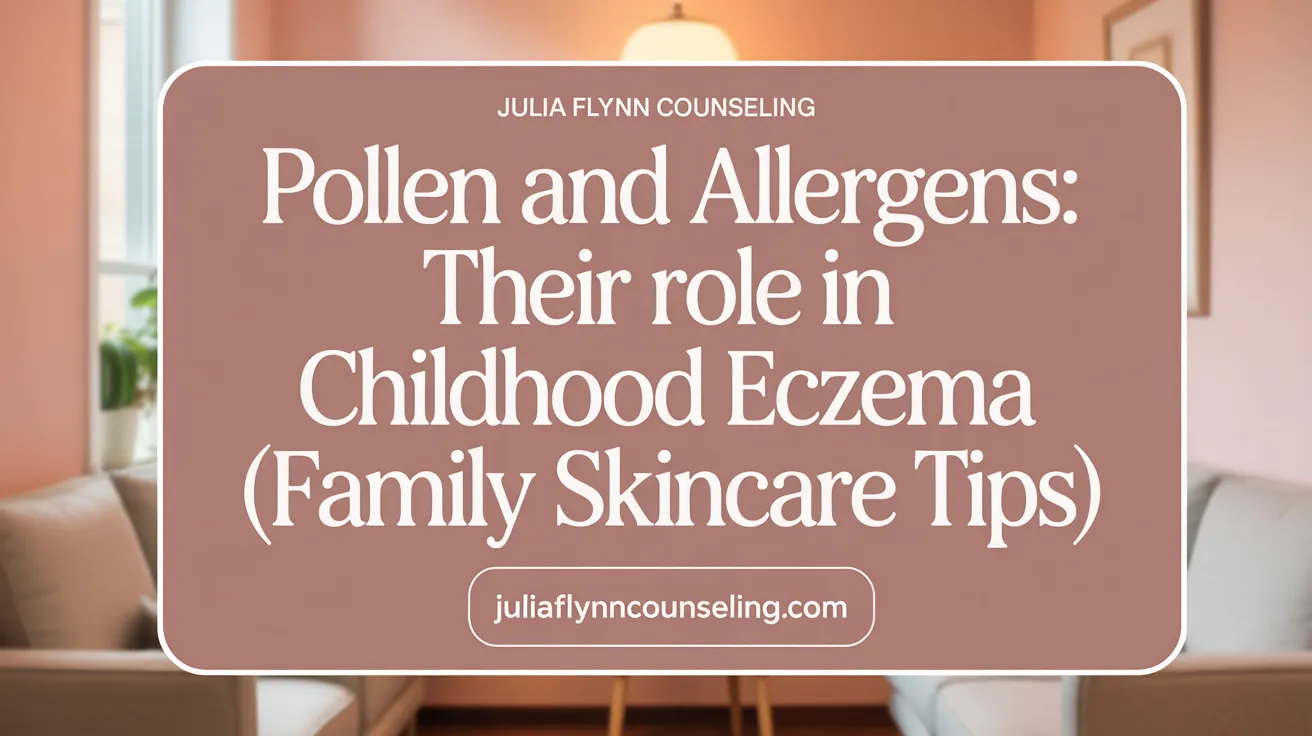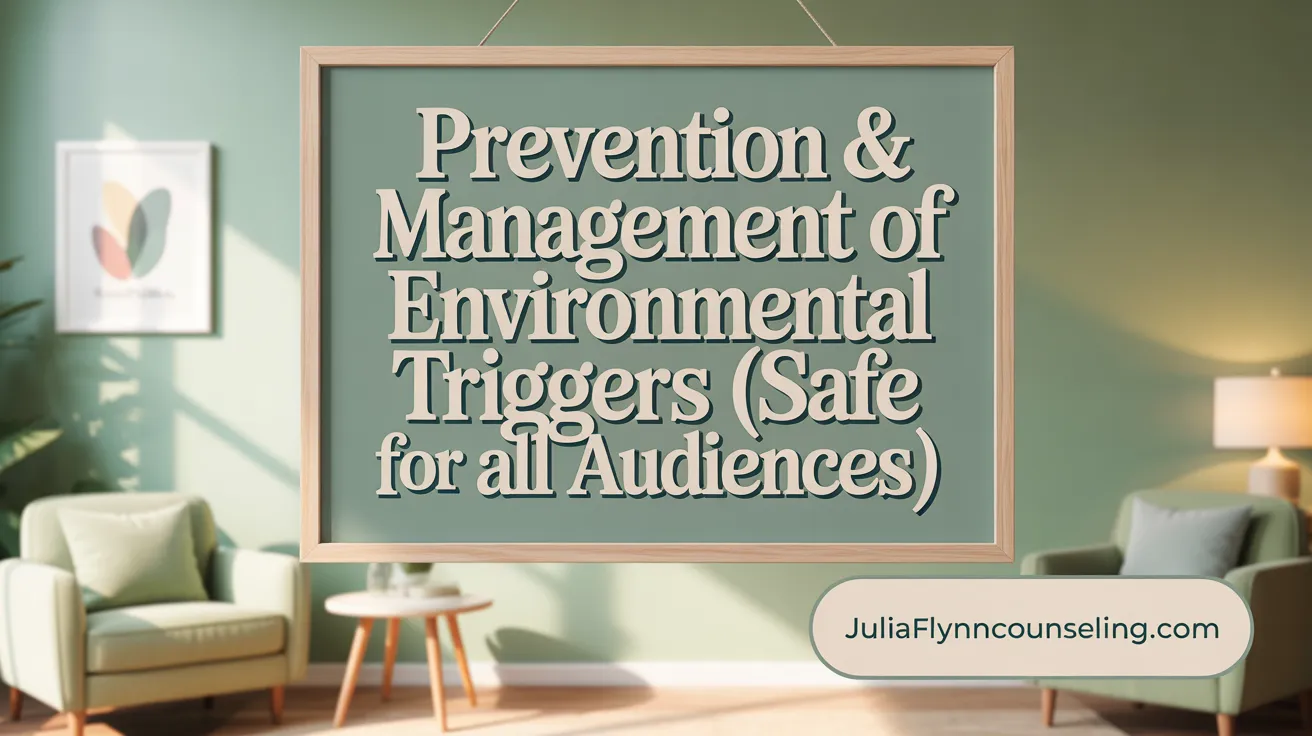Why Environment Matters in Childhood Eczema
Childhood eczema, often appearing early in life, is a chronic inflammatory skin condition characterized by itchy, red, and scaly patches. While genetics play a key role, environmental factors significantly influence the frequency and severity of eczema flare-ups. Understanding these external contributors is essential for effective management and prevention of uncomfortable symptoms in children.
Key Environmental Factors That Trigger Childhood Eczema Flare-Ups

What environmental factors contribute to flare-ups of childhood eczema?
Childhood eczema, particularly atopic dermatitis, is a chronic condition characterized by dry, itchy, and inflamed skin. While its exact causes are complex and involve genetic predisposition, environmental factors play a significant role in triggering or worsening flare-ups.
Several external influences can compromise the skin’s barrier and provoke immune responses that lead to eczema symptoms. Air pollution, such as particulate matter, nitrogen dioxide, and volatile organic compounds (VOCs), has been linked to increased eczema severity. Exposure to tobacco smoke, both indoors and outdoors, can further irritate sensitive skin and exacerbate symptoms.
Weather conditions are also influential. Low humidity, cold, and dry air can strip skin of moisture, increasing dryness and susceptibility to irritation. Conversely, high humidity and heat may cause sweating, which can also worsen itching and inflammation.
Irritants directly contacting the skin are common triggers. Harsh soaps, detergents, and synthetic fabrics like nylon or wool can irritate or damage the skin, leading to flare-ups. Skin care products containing fragrances or chemicals may have similar effects.
Beyond physical irritants, internal stressors such as emotional stress, anxiety, or social changes associated with urbanization can modulate immune responses, making skin more reactive. Urban environments tend to have decreased biodiversity exposure, which recent hypotheses suggest may impair immune regulation.
In summary, pollution, weather dynamics, contact with irritants, and psychosocial stress collectively influence whether childhood eczema remains controlled or worsens.
Impact of environmental triggers on childhood eczema
| Environmental Factor | Effect on Eczema | Notes |
|---|---|---|
| Air pollution (PM, NO2, VOCs) | Worsens symptoms | Damages skin barrier, promotes inflammation |
| Tobacco smoke | Increases flare-ups | Known irritant and immune modulator |
| Weather (humidity, temperature) | Triggers dryness or sweating | Both extremes can worsen skin condition |
| Contact irritants (soaps, fabrics) | Causes irritation | Prefer gentle, fragrance-free products |
| Urban living | Associated with higher prevalence | Possibly due to pollution and reduced biodiversity |
| Stress and social change | Modulates immune response | Stress management may reduce flare-ups |
Understanding these factors allows caregivers to develop strategies such as minimizing exposure to pollutants, protecting skin from irritants, maintaining humidity levels, and managing stress to help control childhood eczema.
Common Triggers and Allergens Exacerbating Childhood Eczema

What are common triggers and allergens that exacerbate childhood eczema?
Children with eczema often experience flare-ups triggered by various environmental and internal factors. Understanding these triggers helps in managing the condition effectively.
Environmental allergens play a significant role. Dust mites, pollen from trees and grasses, mold, and pet dander are frequent culprits. Exposure to these allergens can cause immune reactions, leading to increased inflammation and itching. For example, during high pollen seasons, children may experience worse symptoms, especially if they are sensitized to these outdoor triggers.
In addition, irritants found in personal care and household products can aggravate eczema. Harsh soaps, detergents, and skincare items containing fragrances or chemicals can strip moisture from the skin and disrupt the skin barrier. Fabric choices also matter; rough textiles like wool or synthetic fibers can cause irritation and worsen symptoms.
Food allergies are another important factor, especially in infants and young children. Common food triggers include eggs, milk, peanuts, tree nuts, seeds, shellfish, tomatoes, citrus fruits, spicy foods, preservatives, and additives. These can directly cause immune reactions or make existing eczema worse. Food sensitivities often require careful identification through medical testing and diet management.
Heat and sweating, particularly in warm weather or during physical activity, can cause itching and inflammation. Excessive heat increases skin moisture and salt content in sweat, leading to irritation. Emotional stress and anxiety are also known to trigger flare-ups by causing inflammatory responses in the body.
Managing these triggers involves multiple strategies: avoiding known allergens and irritants, maintaining good skin hydration through regular moisturizing, and using gentle, fragrance-free products. Outdoor activities in high pollen seasons should be managed with protective measures like wearing masks and showering after exposure. Recognizing individual sensitivities and working with healthcare professionals to develop a personalized eczema management plan are vital steps.
In summary, childhood eczema can be worsened by environmental allergens like dust mites and pollen, irritants in personal and household products, certain foods, as well as heat, sweating, and stress. Careful avoidance and skin care routines can help reduce the frequency and severity of flare-ups, leading to better quality of life for affected children.
The Role of Weather and Climate on Childhood Eczema Severity

How do weather conditions impact the severity of childhood eczema?
Environmental factors such as humidity, temperature, UV radiation, and precipitation play a significant role in the severity and prevalence of childhood eczema. Studies show that higher outdoor relative humidity and greater exposure to ultraviolet (UV) light tend to be associated with a lower prevalence of eczema. Moist and sunny environments help maintain skin hydration and barrier function, which are crucial in reducing eczema symptoms.
In contrast, increased temperatures and heightened heating degree days—times when heating is necessary—are linked to a rise in eczema cases and can lead to poorer disease management. Precipitation also influences eczema, with more rainy days correlating with increased disease activity, possibly due to the dampness affecting skin condition.
Climate change adds another layer to this issue by affecting pollen allergenicity. Warmer temperatures and altered weather patterns can prolong pollen seasons and increase the concentration of airborne allergens. This heightened allergen exposure can trigger or worsen eczema symptoms, especially in children who are sensitized.
Furthermore, seasonal variations often bring about exacerbations. For example, cold and dry winter air can dry out the skin and worsen eczema, while hot and humid summer weather may lead to increased sweating, which can irritate the skin further. Understanding how these weather patterns influence eczema severity helps caregivers and healthcare providers manage the condition better by adjusting skin care routines, avoiding triggers during specific seasons, and being prepared for environmental changes.
Personal Care Products and Household Irritants: Hidden Flare-Up Culprits

Which personal care products and household irritants can worsen eczema in children?
Eczema in children can be aggravated by various personal care products and household agents. Fragrances, both artificial perfumes and natural essential oils like tea tree or lavender, are well-known triggers as they can cause allergic or irritant reactions on sensitive skin.
Chemical ingredients such as cocamidopropyl betaine, found in many shampoos and body washes, can irritate the skin or cause allergic reactions. Similarly, substances like propylene glycol, used in moisturizers for their humectant properties, and ethanol in gels and sprays, are potential irritants. Lanolin, a natural product derived from wool, and retinoids used in some skincare formulations, may also trigger flare-ups in sensitive skin.
Household irritants play a significant role as well. Dust mites, pet dander, and mold spores are common allergens that can worsen eczema symptoms. Harsh cleaning agents, including strong detergents and surface disinfectants, containing chemicals and fragrances, can further irritate the skin.
To help manage eczema, it is advisable to choose gentle, fragrance-free, and hypoallergenic personal care products. Avoiding products with synthetic fragrances, alcohol, or harsh chemicals can reduce skin irritation.
Minimizing exposure to household allergens is also important. Regular cleaning to control dust and pet dander, using air purifiers, and ensuring proper ventilation can lessen allergen accumulation. Wearing clothing made from breathable fabrics like cotton or silk, and avoiding wool or synthetic fibers, which can cause friction and irritation, supports skin health.
Implementing these strategies can significantly reduce the likelihood of eczema flare-ups in children caused by hidden environmental triggers. Proper product selection and household management are essential parts of a comprehensive eczema care plan.
Environmental Allergens, Especially Pollen, and Their Connection to Childhood Eczema

How are environmental allergens such as pollen related to childhood eczema?
Environmental allergens like pollen play a significant role in childhood eczema, especially among children with atopic dermatitis. These children typically have a compromised skin barrier and are genetically predisposed—mutations in genes like filaggrin—making their skin more vulnerable to irritants and allergens.
During high pollen seasons or in dry, windy weather, pollen particles can penetrate sensitive, inflamed skin and further trigger immune responses. This leads to increased inflammation, redness, itching, and flare-ups of eczema. In some cases, exposure to pollen not only aggravates existing eczema but also increases the risk of developing pollen allergies later, contributing to the so-called "atopic march".
Children with eczema often react strongly to pollen, which can cause the skin to become even more irritated and sensitive. To minimize these flare-ups, parents are advised to reduce outdoor exposure during peak pollen times, wear protective clothing, keep windows closed, and wash off pollen from the skin and hair after outdoor activities.
In summary, pollen is a hypersensitivity trigger that can exacerbate eczema symptoms and influence disease progression. Managing environmental exposure during high pollen seasons is crucial for controlling eczema severity in susceptible children.
Strategies to reduce pollen-related eczema flare-ups
- Limit outdoor activities during peak pollen seasons.
- Use masks and protective clothing when exposed to outdoor air.
- Keep windows and doors closed to prevent pollen from entering indoor spaces.
- Shower and wash hair after outdoor activities to remove pollen.
- Use air purifiers to reduce indoor pollen and allergens.
- Maintain skin hydration and barrier function with moisturizers to minimize allergen penetration.
By understanding the connection between pollen exposure and eczema, parents and caregivers can implement practical strategies to reduce flare-ups and improve the quality of life for children affected by atopic dermatitis.
Effective Prevention and Management Strategies for Environmental Triggers

How can caregivers prevent and manage environmental triggers of childhood eczema?
Managing eczema in children involves a combination of practical steps aimed at reducing exposure to environmental factors that can cause flare-ups. Regular moisturizing is fundamental; applying fragrance-free, gentle emollients immediately after baths creates a protective barrier on the skin, helping retain moisture and reducing dryness. It’s equally important to avoid hot water and harsh soaps, which can strip natural oils and trigger irritation.
Environmental control plays a big role in prevention. Using humidifiers in dry indoor settings helps maintain skin hydration, especially during winter months or in areas with low humidity. Choosing clothing made from natural, breathable fabrics like cotton minimizes contact with fabrics that can worsen irritation. Avoiding irritants such as tobacco smoke, synthetic fabrics, and fragrances in personal care products can significantly decrease inflammation and itching.
Reducing exposure to outdoor pollutants—including pollen, dust mites, pet dander, and mold—and indoor allergens is essential. Measures include keeping windows closed during high pollen seasons, washing bedding frequently, and managing pet access if allergies are identified. Stress is another trigger that can exacerbate eczema symptoms; incorporating stress management practices such as relaxation techniques, outdoor activities, and sufficient sleep can help keep flare-ups in check.
Identification of specific triggers through medical testing, like allergy testing or patch tests, enables targeted avoidance strategies. For example, if certain foods or contact allergens are identified as triggers, avoiding them can lessen disease severity. Combining these approaches creates a comprehensive plan that helps maintain healthier skin and reduces the frequency and intensity of eczema flare-ups in children.
How to Identify and Minimize Environmental Triggers to Reduce Flare-Ups

How can one identify and minimize environmental triggers to reduce childhood eczema flare-ups?
Identifying environmental triggers for childhood eczema involves careful observation and documentation. Caregivers can keep a trigger diary that records daily activities, diet, clothing choices, weather conditions, and any exposure to potential irritants like smoke or pollution. By noting when flare-ups occur, patterns often emerge, highlighting specific triggers.
Common environmental triggers include harsh soaps, fragrances, wool or synthetic fabrics, cold or dry weather, and exposure to tobacco smoke or air pollutants. Recognizing these allows caregivers to take targeted actions.
Reducing exposure relies on making informed choices in daily routines. Switching to gentle, fragrance-free skin and laundry products helps prevent irritation. Choosing breathable Cotton or natural fabrics minimizes skin contact with rough or synthetic materials.
Maintaining optimal indoor humidity levels with a humidifier can prevent skin dryness and irritation. Avoiding known irritants such as household cleaning chemicals, pet dander, or pollen during high seasons further reduces risks.
Immediate post-bathing moisturization with emollients like petrolatum or thicker creams helps reinforce the skin barrier. Managing stress through relaxing activities can also reduce eczema severity.
In some cases, allergy testing, including patch tests, can identify specific sensitivities. Collaborating with healthcare professionals enables parents to develop personalized strategies, ensuring better control over eczema symptoms and fewer flare-ups.
The Complex Interplay of Environment, Genetics, and Immune Response in Childhood Eczema

How do genetic predispositions such as filaggrin mutations influence childhood eczema?
Genetic factors play a significant role in the development of eczema. Variations in the filaggrin gene, which encodes a protein essential for skin barrier function, are common in affected children. These mutations can lead to a compromised skin barrier, allowing environmental irritants and allergens to penetrate more easily. This increases the likelihood of inflammation and eczema symptoms.
What is the role of the skin microbiome and dysbiosis?
The skin's microbial community, or microbiome, is crucial for maintaining healthy skin. In eczema, there is often a decrease in microbial diversity and an overgrowth of Staphylococcus aureus. This imbalance, known as dysbiosis, can worsen skin inflammation, making eczema more severe and difficult to control.
How do environmental factors activate the immune system?
Environmental triggers such as allergens, pollutants, and irritants stimulate an immune response. Contact with substances like pollen, dust mites, or harsh chemicals can activate immune cells, leading to inflammation and the characteristic signs of eczema. Climate factors like temperature and humidity also modulate allergen exposure and immune activity.
Why is a multifaceted approach important in managing childhood eczema?
Effective management involves addressing genetic vulnerabilities, restoring skin barrier integrity, and reducing exposure to environmental triggers. Routine skin hydration, avoiding irritants, managing stress, and possibly using medications or probiotics are all strategies that can help control flare-ups. Combining these approaches offers the best chance to improve quality of life for children with eczema.
Navigating Eczema Triggers for Healthier Skin
Childhood eczema is a multifaceted condition deeply influenced by a variety of environmental factors ranging from pollution and weather to allergens and household irritants. By understanding these triggers and adopting comprehensive strategies—including consistent skin care, environmental controls, stress reduction, and professional guidance—caregivers can significantly mitigate flare-ups and improve the quality of life for children affected by eczema. Continued research and awareness remain essential as we strive to support healthier skin and well-being in young eczema sufferers.
References
- Atopic eczema is an environmental disease - PMC
- Environmental risk factors and their role in the ...
- Eczema: What It Is, Symptoms, Causes, Types & Treatment
- Baby eczema: causes, symptoms, treatment and more
- Eczema Triggers: Understanding Them & How to Treat
- What's Causing My Eczema? 6 Common Triggers
- Managing Eczema in Winter and Year Round: A Parents ...
- Eczema and the cold | NIH MedlinePlus Magazine
- Atopic dermatitis (eczema) - Symptoms and causes
- Flares in Childhood Eczema
